Introduction
Integrating Buddha statues for home vastu is more than just a decorative choice—it’s a deliberate act guided by the principles of Vastu Shastra aimed at enhancing your environment with peace, prosperity, and positivity. Each type of Buddha statue serves a unique purpose and can significantly impact various aspects of your life, from mental well-being to overall harmony in your home. This comprehensive guide will explore the different types of Buddha statues, their specific benefits, and optimal placement to ensure you receive the maximum benefits.
Understanding Buddha Statues for Home Vastu
Buddha statues for home Vastu are considered powerful tools for bringing balance and positive energy into a home. The placement and type of Buddha statue you choose can influence different areas of your life, including health, safety, prosperity, and intellectual growth. Each statue’s design and mudra (hand gestures) carry symbolic meanings that align with various Vastu principles, guiding how and where they should be placed to harness their full potential.
10 Common Types of Buddha Statues for Home Vastu
Meditation Buddha
The Meditation Buddha statue is often depicted with Buddha seated in a cross-legged posture, hands resting on his lap, and eyes either half-closed or fully shut. This posture, known as the double lotus position, symbolizes deep contemplation and inner peace.
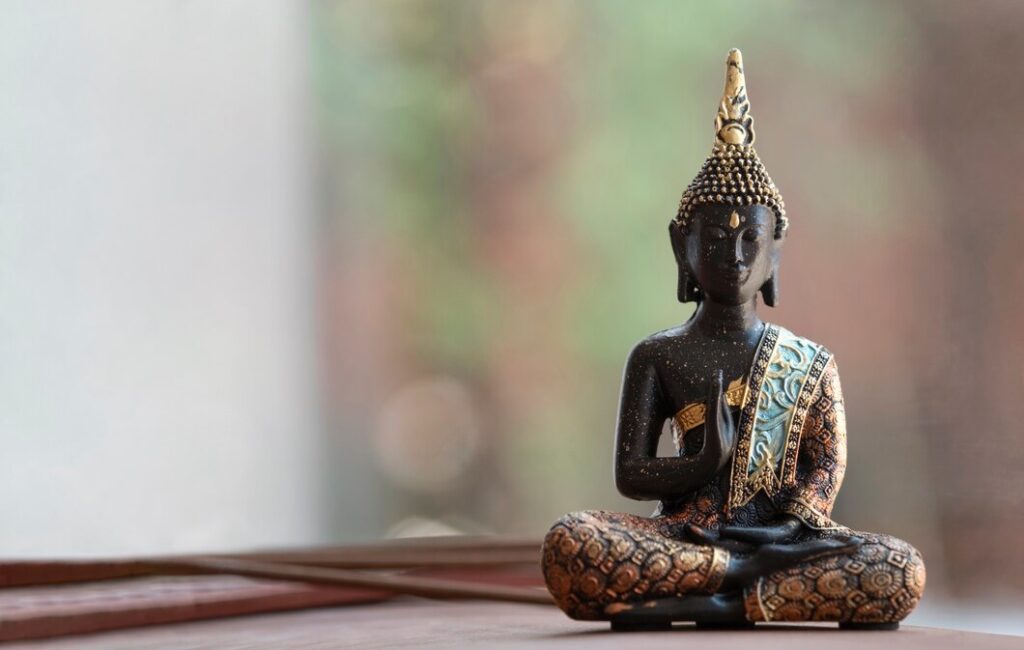
Ideal Location: Position this statue in a quiet and serene spot, such as a dedicated meditation corner, garden, or northeast part of your home.
Benefits: Enhances meditation practices, promotes tranquility, and improves mental focus. It’s particularly effective in areas designated for relaxation and self-reflection.
Protection Buddha:
The Protection Buddha is characterized by the Abhay Mudra, where one hand is raised in a reassuring gesture, and the other rests on the lap. This symbol is believed to ward off fear and protect against negative energies.
Ideal Location: Place this statue facing the main entrance of your home to guard against negative influences and invite positive energy.
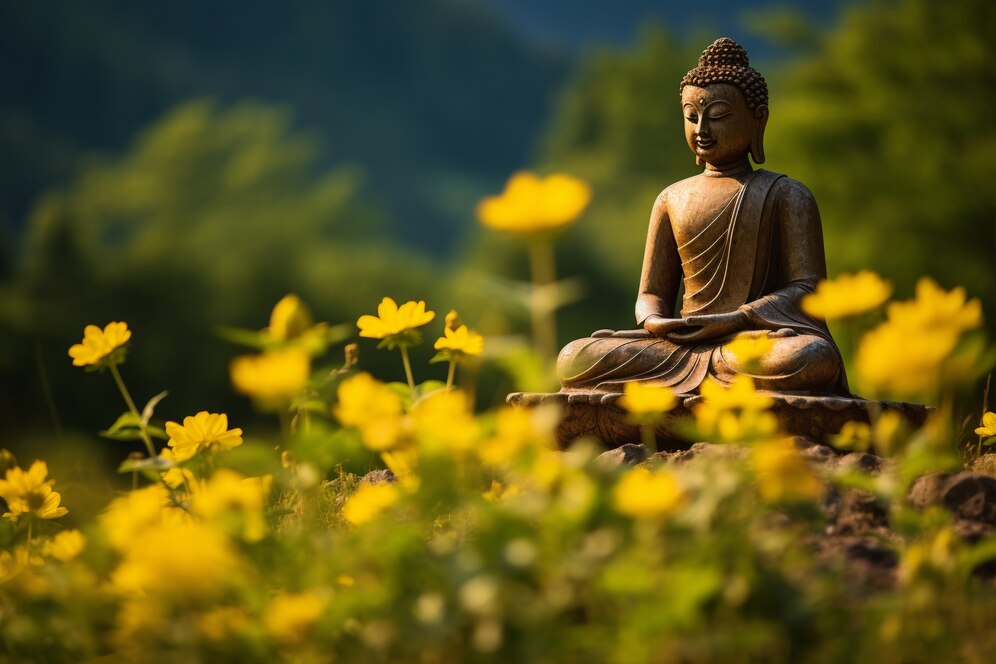
Benefits: Provides a sense of security, protects against adverse influences, and creates a safe and welcoming environment.
Reclining Buddha:
The Reclining Buddha statue depicts Buddha lying on his side, often with a serene smile, symbolizing enlightenment and the peaceful transition from life to Nirvana.
Ideal Location: Position this statue in the living room or any peaceful area to serve as a constant reminder of spiritual fulfillment and tranquility.
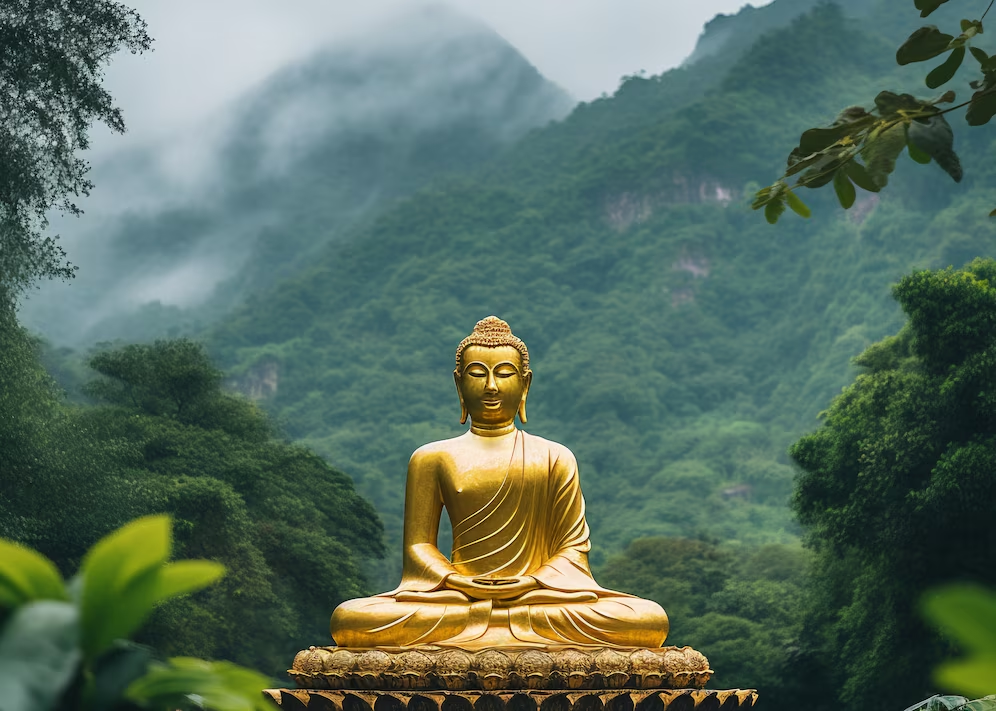
Benefits: Encourages harmony, represents spiritual fulfillment, and contributes to a calming atmosphere within the home.
Medicine Buddha
The Medicine Buddha statue is often shown with blue skin and a bowl of medicinal herbs in one hand. This statue represents healing, health, and the dispensation of divine remedies.
Placement Tips:
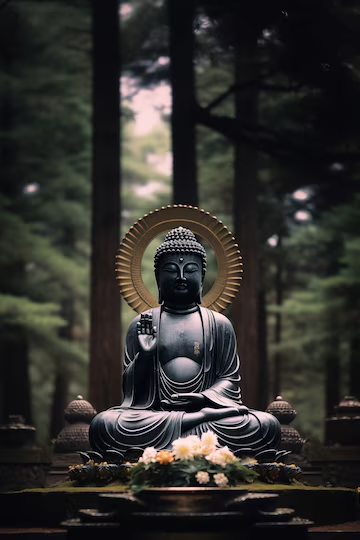
Ideal Location: Best placed in the north or northeast part of your home, ideally in a room with ample natural light and ventilation.
Benefits: Promotes physical health, aids in healing, and enhances overall wellness by creating a health-positive environment.
Also Read: Keep Your Home Happy: Gifts to Avoid As per Vastu Shastra
Teaching Buddha
The Teaching Buddha statue shows Buddha with his hands forming a circle, symbolizing the Wheel of Dharma. This gesture signifies the transmission of wisdom and teachings.
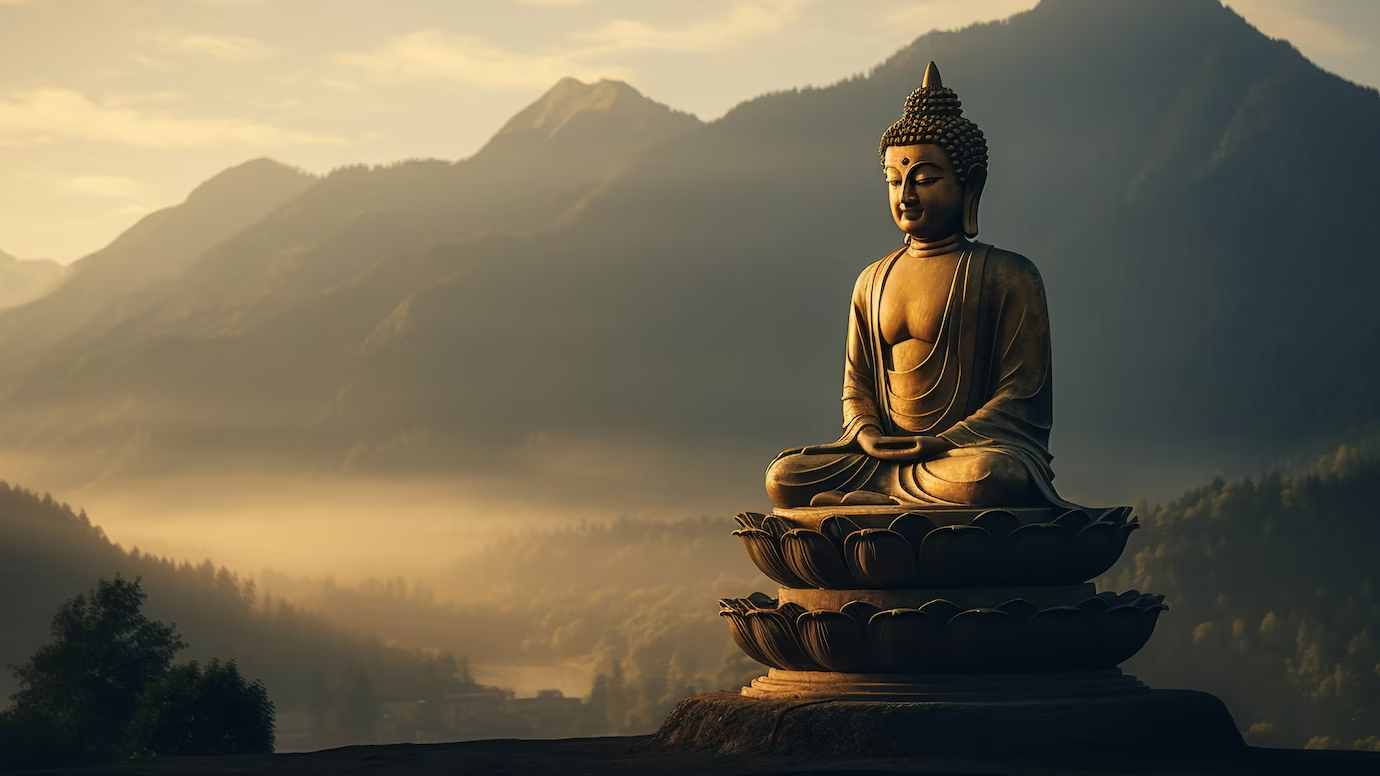
Ideal Location: Place this statue in the study room, library, or any space dedicated to learning and intellectual pursuits.
Benefits: Enhances educational achievements, supports intellectual growth, and fosters an environment conducive to learning and wisdom.
Praying Buddha
The Praying Buddha statue depicts Buddha with folded hands, symbolizing devotion, faith, and reverence. This pose signifies a deep connection with the divine.
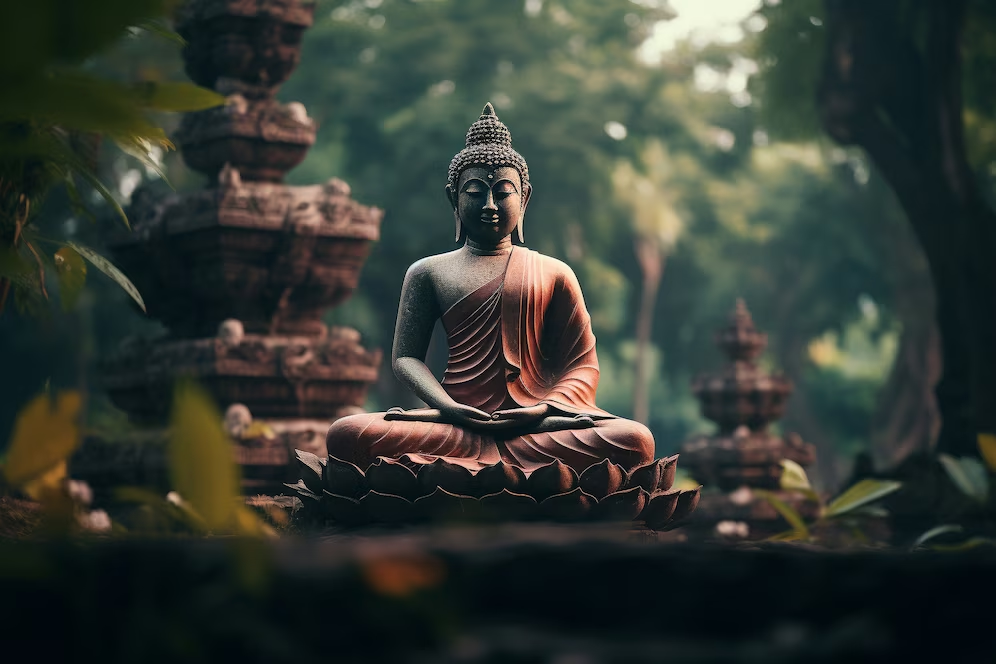
Ideal Location: Ideal for placement in a home temple, prayer area, or entrance to amplify spiritual practices and invite positivity.
Benefits: Enhances devotion, cultivates a positive spiritual atmosphere, and brings a sense of peace and reverence into the home.
Vitarka Mudra Buddha
The Vitarka Mudra Buddha statue features Buddha with his hand forming a circle with the thumb and index finger, representing the flow of wisdom and intellectual energy.
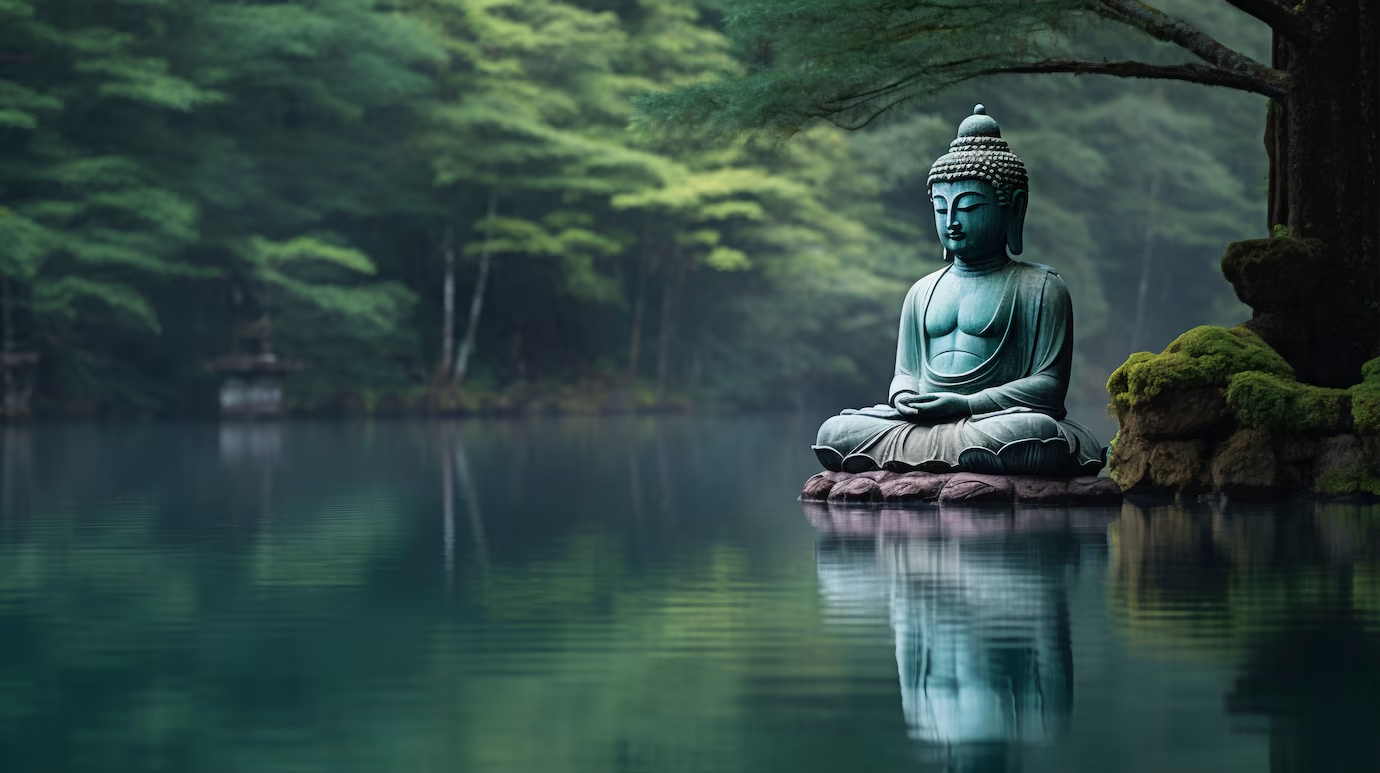
Ideal Location: Best placed in study areas, offices, or workspaces to inspire intellectual growth and success.
Benefits: Supports academic achievements, boosts concentration, and encourages a continuous flow of wisdom.
Karana Mudra Buddha
The Karana Mudra Buddha statue shows Buddha with his index and little fingers pointing upwards, believed to dispel negative energies and protect against evil forces.
Ideal Location: Avoid placing this statue at the front door or in the bedroom. Suitable locations include private areas where protection from negativity is desired.
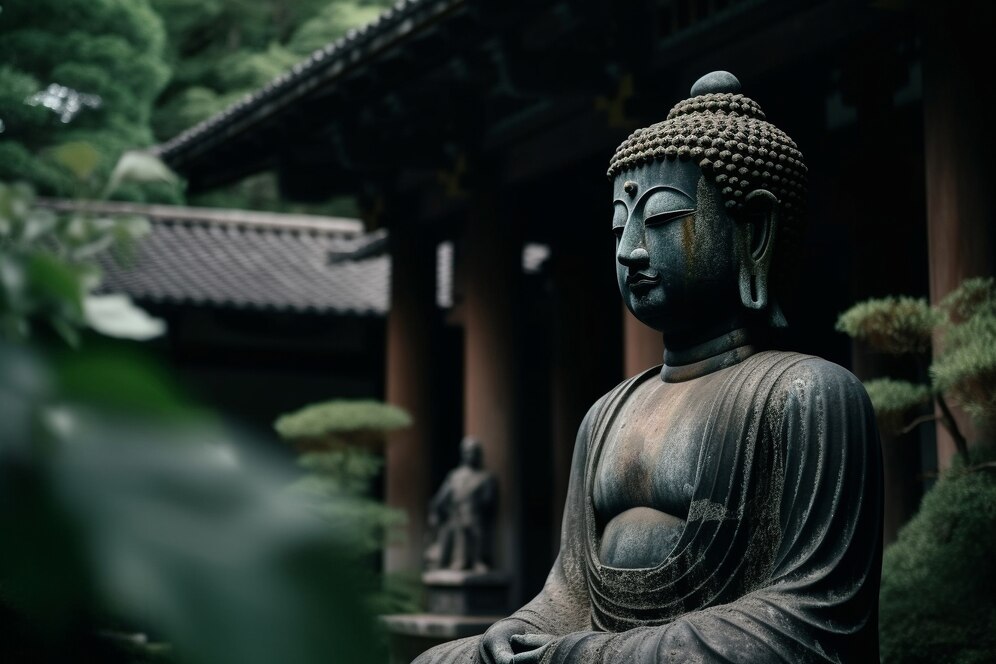
Benefits: Provides protection from harmful influences, promotes a positive energy flow, and wards off negativity.
Also Read: Creating a Balanced Home: The Five Elements of Vastu Shastra Explained
Bhumisparsha Mudra Buddha
The Bhumisparsha Mudra Buddha statue depicts Buddha touching the earth with one hand while seated in a meditative posture. This gesture symbolizes the moment of enlightenment and grounding.
Ideal Location: Place this statue in the east direction of your home or in the central area to help resolve crises and bring stability.
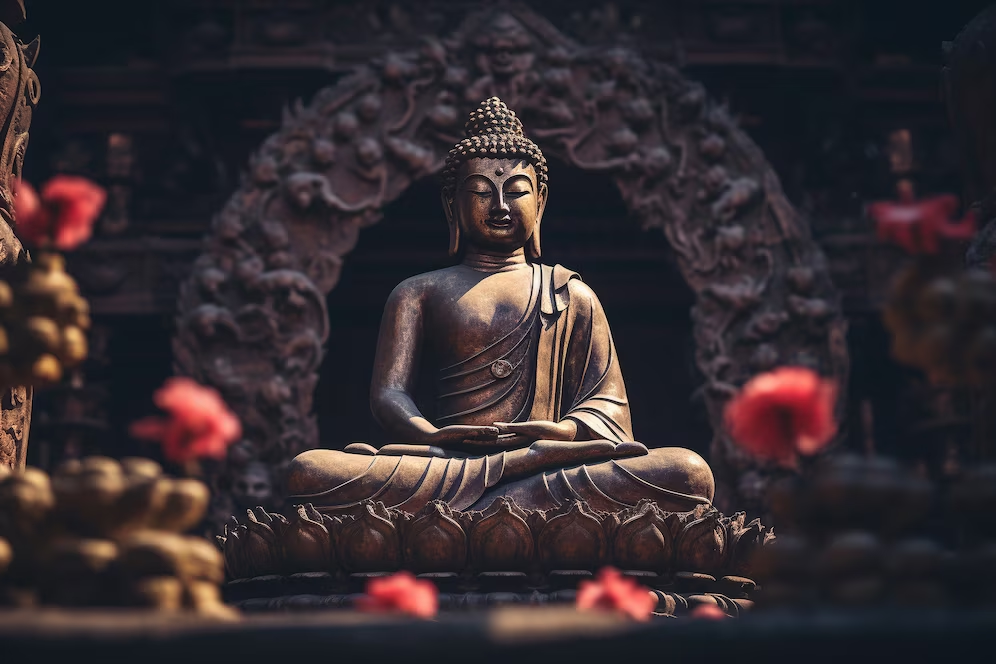
Benefits: Promotes spiritual grounding, resolves issues, and brings eternal knowledge and tranquility into the home.
Baby Buddha
The Baby Buddha statue is often depicted in playful or meditative poses, symbolizing innocence, joy, and good fortune. These statues are typically vibrant and can be found in pairs or groups.
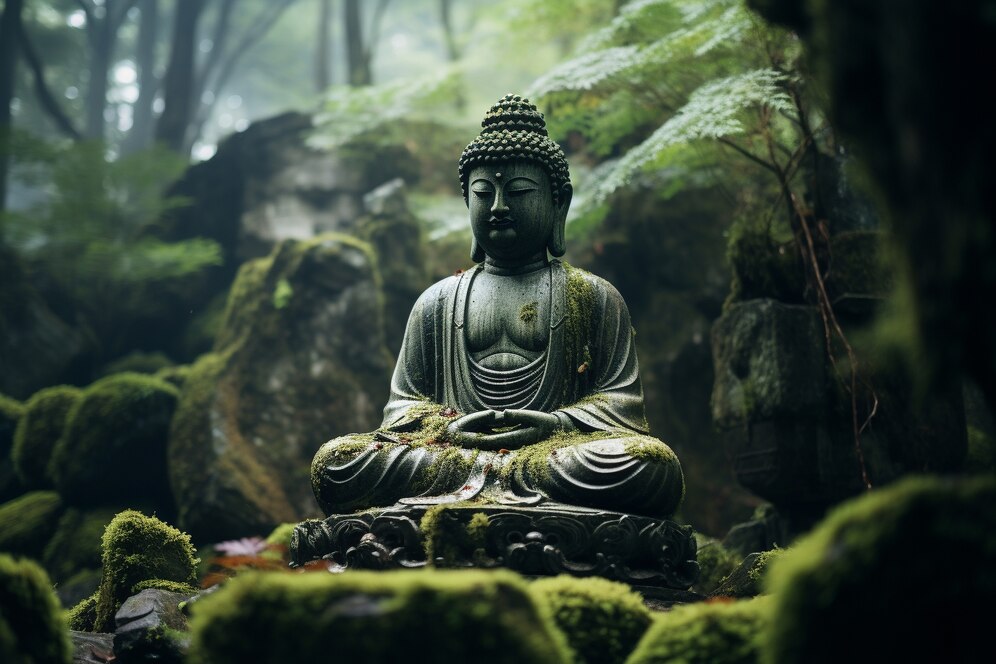
Ideal Location: Place these statues in living areas, children’s rooms, or near entrances to enhance happiness and positive energy.
Benefits: Attracts good luck, promotes joy, and adds a sense of peace and cheerfulness to the home.
Buddha Statue Placement in House
Correct placement of Buddha statues is crucial for maximizing their benefits and enhancing the flow of positive energy throughout your home. Here are some essential placement guidelines:
Main Entrance: Placing a Buddha statue for home vastu at the main entrance of your home is highly effective for welcoming positive energy and warding off negativity. Ensure that the statue faces the door to guard against adverse influences and invite good fortune.
Living Room: Positioning a Buddha statue in the living room, especially the Reclining Buddha, creates a harmonious environment and serves as a reminder of spiritual fulfillment and peace.
Study Room: The Teaching Buddha and Vitarka Mudra Buddha statues are ideal for the study room or office. They enhance intellectual growth, concentration, and academic success.
Meditation Corner: The Meditation Buddha statue is perfect for a designated meditation space or garden area, fostering tranquility and enhancing meditation practices.
Health Area: The Medicine Buddha statue should be placed in the north or northeast part of your home, preferably in a room with good natural light, to promote health and healing.
Crisis Resolution: The Bhumisparsha Mudra Buddha statue is best positioned in the east direction or central area of the home to help resolve crises and bring stability.
Also Read: 12 Vastu Plants to Energize Your Home and Bring Positive Energy
Things to Avoid in Buddha Statue Placement
To ensure that your Buddha statue remains effective in enhancing positive energy, avoid the following placement errors:
Direct Floor Placement: Never place a Buddha statue directly on the floor. Use a pedestal, mat, or carpet to elevate the statue and maintain its vibrational integrity.
Bathrooms and Kitchens: Avoid placing Buddha statues in bathrooms, kitchens, or near shoe racks and staircases. These locations can disrupt the statue’s energy and diminish its positive effects.
Electronic Devices: Keep Buddha statues away from large electronic devices like TVs and computers, as these can interfere with the statue’s vibrational energy and reduce its effectiveness.
Conclusion:
Incorporating a Buddha statue for home vastu into your home according to Vastu Shastra can profoundly impact your living space, creating an environment of peace, prosperity, and positive energy. By understanding the significance of each statue type and following optimal placement guidelines, you can invite tranquility, health, and harmony into your home. Embrace the transformative power of Buddha statues and experience the harmonious balance they bring to your life.
Frequently Asked Questions:
The Meditation Buddha statue is ideal for promoting peace and tranquility. Place it in a quiet, serene spot for optimal benefits.
Position the Protection Buddha statue facing the main entrance of your home to guard against negative influences and invite positive energy.
It is advised to avoid placing Buddha statues in kitchens, bathrooms, or near shoe racks as these locations can disrupt the statue’s energy.
The Medicine Buddha statue, often depicted with a bowl of medicinal herbs, is best for enhancing health and well-being. Place it in the north or northeast part of your home.
No, Buddha statues should not be placed directly on the floor. Use a pedestal, mat, or carpet to elevate the statue and maintain its vibrational integrity.
Suggested Articles:
Creating a Balanced Home: The Five Elements of Vastu Shastra Explained
Keep Your Home Happy: Gifts to Avoid As per Vastu Shastra
12 Vastu Plants to Energize Your Home and Bring Positive Energy








































